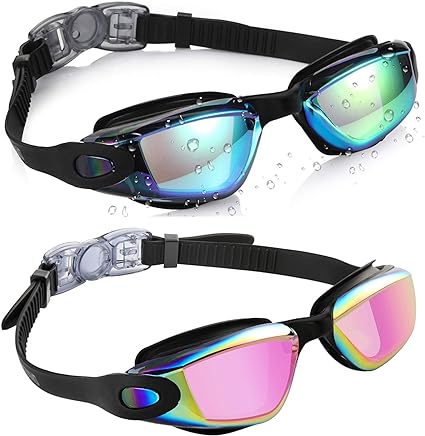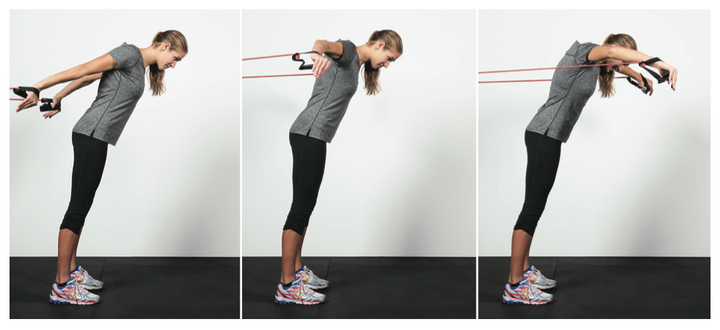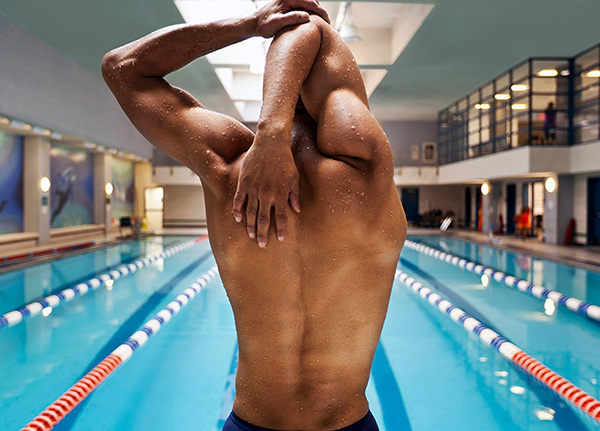Butterfly swimming, a challenging yet rewarding stroke, combines grace and power in the water. Mastering its basics is attainable for beginners through patience, practice, and proper guidance. This symmetrical stroke, mirroring a butterfly’s wing motion, involves a simultaneous arm pull and leg kick followed by a glide phase.
Despite its difficulty, mastering butterfly swimming is effective for enhancing strength, endurance, and cardiovascular fitness. Understanding its fundamentals forms a crucial base for advanced skills, aiding in body positioning, coordination, and muscle memory essential for efficient swimming. Swim Time Log‘s comprehensive guide aims to assist beginners by breaking down the stroke’s key components, essential techniques, and offering tips to overcome common challenges, preparing them for an accomplished journey in butterfly swimming.
Understanding the Butterfly Stroke with Swim Time Log
The butterfly stroke is a symmetrical stroke that involves a simultaneous arm pull and leg kick, followed by a brief period of gliding with the arms extended overhead. The arms are recovered over the water, and the cycle begins again. Mastering this stroke with our guidance is a fantastic way to improve swimming as exercise due to its demands on strength, endurance, and cardiovascular fitness.
The butterfly stroke consists of three main phases, making it an excellent workout in a swimming pool:
- The dolphin kick: A powerful, undulating leg movement that originates at the hips and travels down the spine, culminating in a whip-like motion of the feet. Learning how to swim the butterfly stroke involves mastering this powerful kick for an effective workout.
- The arm pull: A sweeping motion that starts with the arms extended overhead, dives down and forward, pulls inward towards the chest, and recovers over the water. Perfecting this technique is essential for an efficient swimming workout.
- Breathing: A quick intake of air as the head lifts out of the water during the arm recovery phase. Proper breathing techniques are crucial for endurance in swimming as exercise.
The difference between butterfly and other strokes lies in its symmetrical arm and leg movements, its undulating body motion, and its unique breathing technique, making it a distinctive workout in a swimming pool. Freestyle, backstroke, and breaststroke each differ in their techniques, providing various workout opportunities for swimmers.
Preparing for Butterfly Swimming – Essential Techniques and Swimming Pool Equipment
Proper warm-up and stretching are essential before attempting butterfly swimming, particularly for those using swimming as exercise. This includes dynamic stretches that target the muscles involved in the stroke, such as the shoulders, back, core, and legs. Static stretches should be performed after the warm-up to improve flexibility and range of motion, making it an ideal exercise routine for the swimming pool.
To practice butterfly swimming effectively, certain equipment is necessary, and we recommends:
- A comfortable and well-fitting swimsuit that allows for freedom of movement in the swimming pool.

Your Swimsuit Could SImply Be a Trunks
- Goggles to protect your eyes from chlorine and improve visibility underwater while enhancing your swimming experience.

Swim Goggles Anti Blur
- A swim cap to keep your hair out of your face and reduce drag, ensuring a smoother workout.
![]()
A Swimcap could also enhance your experience
Learning the Basics – How to Swim the Butterfly Stroke
For beginners learning how to swim the butterfly stroke, mastering specific body movements is crucial. Understanding the arm movement, leg movement, and breathing technique is essential for an effective workout in the swimming pool. Proper techniques can be broken down into manageable steps for beginners:
- Arm movement: Start with your arms extended overhead, then sweep them down and forward, pulling inward towards your chest. Recover your arms over the water, keeping them close to the surface, ensuring a complete workout in the swimming pool.
- Leg movement: Initiate the dolphin kick by squeezing your glutes and pushing your heels down and back. The kick should travel up your spine, culminating in a whip-like motion of the feet, providing a challenging yet rewarding exercise in the swimming pool.
- Breathing technique: As your arms recover over the water, lift your head out of the water and quickly take a breath. Submerge your head immediately after taking the breath, incorporating a crucial element of swimming as exercise.

Breath when your head lifts out of the water
Drills and Exercises to Build Strength and Coordination
To enhance the workout potential of butterfly swimming, we recommends several drills and exercises to help build the strength and coordination necessary for effective swimming as exercise:

Demo of arm band drills
- Arm band drills: Use arm bands to isolate the arm pull and focus on proper technique, developing strong shoulders and a powerful arm pull for an intense swimming pool workout.
- Board kick drills: Hold onto a pool kickboard and practice dolphin kicks with your arms extended overhead. This drill focuses on developing strong core muscles and a proper dolphin kick technique for an effective exercise routine.
- Dryland exercises: Incorporate exercises targeting the muscles involved in butterfly swimming, such as shoulder presses, rows, and planks.
These exercises enhance strength and endurance, ensuring a complete workout experience for swimmers using swimming as exercise.
Practicing Butterfly Swimming – Improving Endurance and Technique in the Swimming Pool

Endurance is also important
Building endurance for butterfly swimming as exercise requires consistent practice and gradual progression, particularly in a swimming pool. Achieving a steady workout pace and rhythm is key to maintaining proper form and technique. Some tips for improving endurance and perfecting technique include,:
- Incorporating interval training: Dividing your swim into intervals of butterfly swimming interspersed with periods of rest or other strokes, gradually increasing the duration of butterfly intervals over time in the swimming pool.
- Focus on breathing control: Practice taking short, controlled breaths during the arm recovery phase to conserve energy and maintain a steady pace while improving your swimming as exercise.
- Strength training: Strengthening the muscles involved in butterfly swimming can significantly enhance your endurance. Focus on exercises targeting shoulders, back, core, and legs, optimizing your workout experience in the swimming pool.
Common Challenges and Solutions – Managing Fatigue and Soreness for a Complete Swimming Workout
Managing fatigue and muscle soreness is a common experience for beginners learning butterfly swimming. we offers some solutions for dealing with these challenges in swimming as exercise, ensuring a complete workout in the swimming pool:
- Listening to your body: Take breaks when feeling fatigued to prevent overexertion and avoid muscle soreness during your swimming workout.
- Proper warm-up and cool-down: Warming up and cooling down properly before and after each swim aids in muscle preparation and recovery for a complete swimming workout.

Warm Up
- Regular stretching: Regular stretching improves flexibility and reduces muscle soreness, enhancing the overall workout experience in the swimming pool.
- Nutrition and hydration: Maintaining a healthy diet and staying hydrated supports muscle recovery and optimal performance during your swimming workout routine.

Swimming Nutrition
Safety Considerations – Ensuring a Safe and Enjoyable Swimming Experience

When engaging in swimming as exercise, it’s vital to prioritize safety in the swimming pool. We emphasizes these safety considerations:
- Always swim in designated swimming areas with lifeguards on duty, particularly if you’re new to butterfly swimming, ensuring a safe workout environment.
- Monitor weather conditions before swimming outdoors and avoid unfavorable conditions, ensuring a safer swimming workout experience.
- Swim with a buddy whenever possible for added safety, especially in case of an emergency, making your swimming workout more enjoyable.
Conclusion
Mastering butterfly swimming requires dedication, practice, and proper technique. By following the guidelines provided in this article, beginners can start a rewarding journey of learning this elegant and challenging stroke while ensuring a complete workout in the swimming pool. With perseverance and the guidance of Swim Time Log, swimmers can soon glide through the water with the grace and power of a butterfly.
Read more:
- Exploring Front Crawl and Underwater Butterfly Swimming
- Butterfly Swimming Made Simple for Beginners: A Step-by-Step Guide
- The Importance of Butterfly Stroke in Modern Swimming
AUTHOR
Sang Nguyen
Sang Nguyen is a former national swimmer for Vietnam who has transitioned into coaching. With a passion for fostering a healthy swimming community and connecting like-minded individuals,......Read More
BLOG
Maybe You Are Interested
Nutrition for Swimmers Guide: Maximizing Performance
Swimming demands not only physical prowess but also a strategic nutritional approach to maximize performance....
Crafting a Nutrition Plan for Competitive Swimmers
In the competitive world of swimming, nutrition plays a pivotal role in an athlete’s performance...
A Comprehensive Guide to Maximum Performance Nutrition for Swimmers
Swimming is not just about technique and training; nutrition plays a pivotal role in a...
Essential Swim Nutrition Tips for Peak Performance
Swimming is a highly demanding sport, requiring a combination of technique, strength, and endurance. But...
Expert Sports Nutrition Advice for Swimmers
In the competitive world of swimming, nutrition and training are as crucial as the technique...
The Synergy of Swimming and Nutrition: Balancing Intake for Optimal Water Performance
The Synergy of Swimming and Nutrition: Balancing Intake for Optimal Water Performance dives into the...